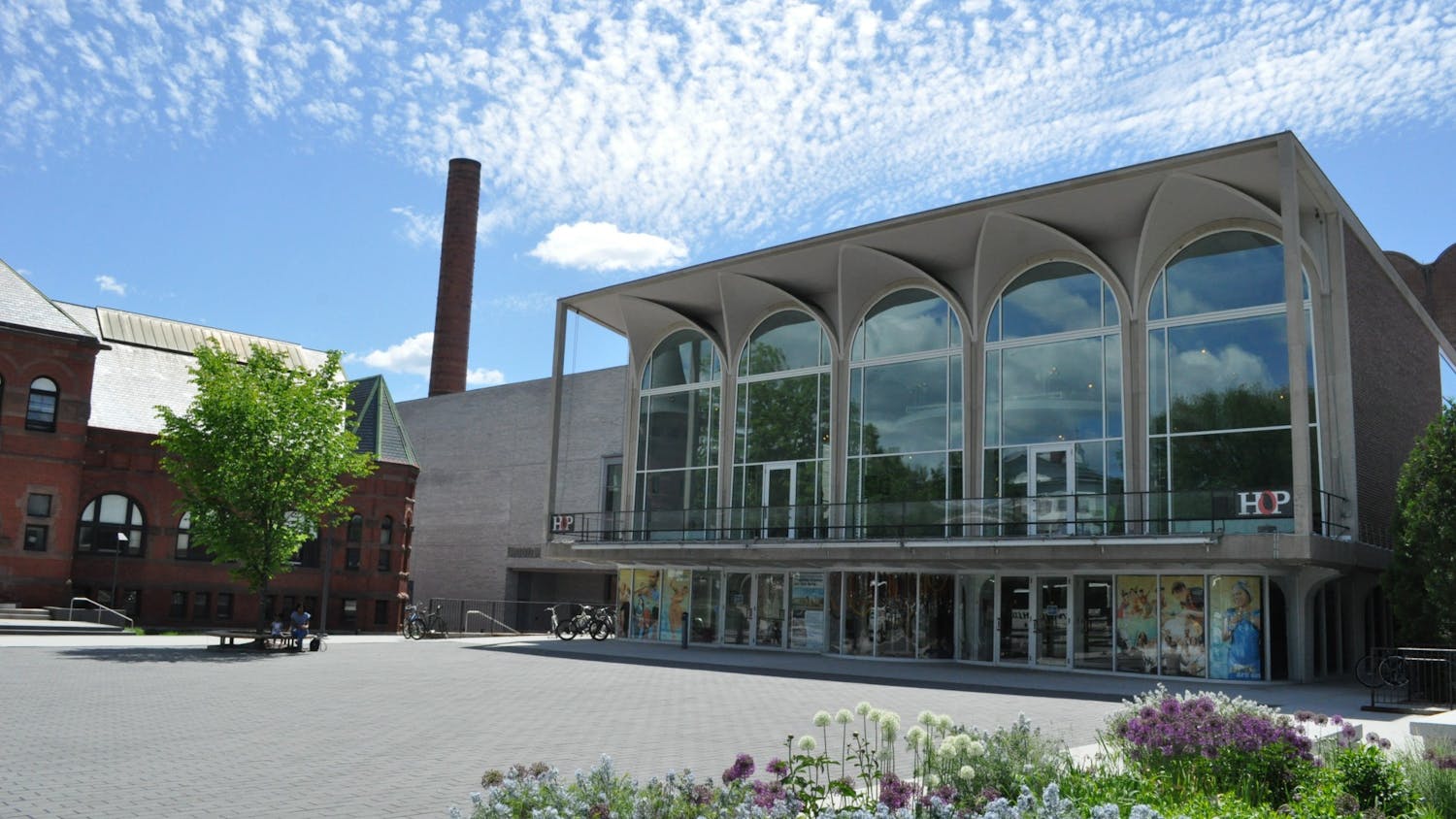Hood's sculpture exhibition titled "You Never Know" which, according to Hood, represents a new variety of soft, wearable sculpture has been on display at the Hop since the beginning of Spring term and will remain there until May 4.
Hood, who graduated last Spring with a studio art minor focused on sculpture, is now an intern for the studio art department as well as a visiting artist at the Claflin Jewelry Workshop. Along with three other interns, Hood helps teach classes, monitors studios and pursues her own work in a studio provided for her by the department, Hood said.
According to Hood, each studio art department intern does a show in the Barrows Rotunda. Hood is the last intern to display her work.
Hood's sculpture is anything but conventional. She has been involved in several performance pieces using her wearable sculptures, including the Boston Art Walk in Spring 2009.
Hood explained that her current exhibition in the Barrows Rotunda began as an accident a few years ago.
"I was trying to make a sculpture you could get into and roll around in like a big ball and it didn't really work out. And I was just looking at it and frustrated and I put two eyes on it and it became that character," Hood said.
Hood calls this project "the clams" but explained, "They can kind of be whatever anyone wants them to be."
This exhibition certainly allows the viewer to use his or her imagination. Hood has endowed us, the audience, with artistic license as we try to understand her simplistic yet surprisingly controversial sculpture pieces.
"I've heard them called the potatoes or the chocolates, or clams or hamburgers," Hood said.
Whatever you call them, it is hard to deny that Hood has captured the attention of the Dartmouth campus with her exhibition. Perhaps the attention the work has received stems from its central location in Barrow's Rotunda a space that, according to Hood, is particularly interesting to work with.
"They're being viewed from 360 degrees. There's not really a front or a back," Hood said.
Hood added that she designed the exhibition by thinking in three-dimensional terms and keeping in mind both the layout of the "clam tank" (i.e., the Barrows Rotunda) and the mobility of her pieces. Hood rearranges the placement of the clams about twice a week; each time the clams move, a new part of their story is being told, Hood said.
According to Hood, this story revolves around the introduction of the bird, another sculpture piece in the exhibit, into the "clam world." The bird is a "stranger," a foreigner.
"He doesn't look like them or act like them, so I think at first it was really just introducing a different character into the clam world and figuring out what the reaction would be," Hood said.
Hood's whimsical and amusing style of storytelling encourages viewers to play along with her characters. Hood, who said she does not take her work too seriously, explained that the exhibition is really just for fun.
"You accept it or you don't. You have fun with it or you don't," Hood said "It's really just kind of silly."
The title of the exhibition, "You Never Know," refers to Hood's desire to engage audiences by emphasizing the playful, mischievous nature of the pieces while still requiring audiences to question their understanding of the medium the clams represent a new form of sculpture: movable, wearable and soft.
"They enter into normal day life. They're not on a pedestal or in a museum. It could happen," Hood said.
Indeed, it has happened. Hood's unique perspective on sculpture has brought to life a clam colony made from burlap and a little ingenuity on the part of the artist.
Hood explained that each clam is constructed of eight triangles of burlap made individually and sewn together using a machine , with softer fabric lining the inside. Each clam is then stuffed and given two eyes made of muslin and acrylic pain. The contrast between the rough burlap and the soft inside, which Hood likened to that of a stuffed animal, figuratively represents a clam itself, Hood said.
Hood described the burlap as adding to the childlike tone of the pieces. The burlap, a "hearty" material, reminded her of "little kids playing and hay."
Hood said she constructed one of the clams so that it could be a wearable piece. She calls this one "escaped clam," as it can sometimes be seen running around campus and the Green, chasing people and generally enjoying itself.
"He's a friendly guy," Hood said.
Hood's infectious liveliness manifests itself in her work. This unique exhibition has attracted viewers not only because we're not really sure what her sculptures represent, but more importantly because we identify with the playful nature of the clams. We, the viewers, have engaged with Hood's exhibition, just as she intended us to.




